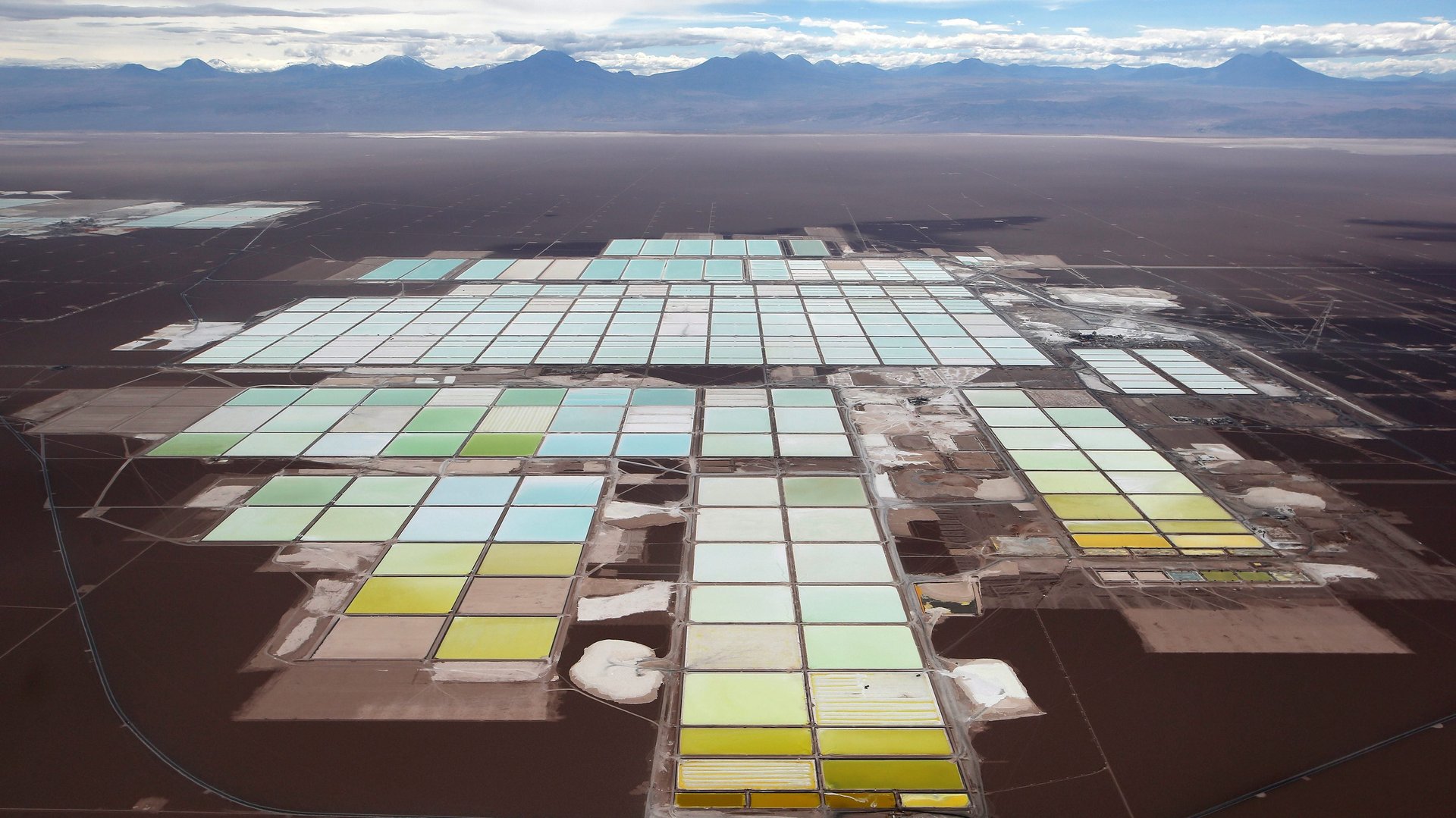Soaring commodity prices are bringing a Chinese lithium giant back from the brink
The global climate economy’s transition to clean energy will drive a huge increase in demand for a number of critical minerals. Among those, lithium is expected to see the fastest growth.


The global climate economy’s transition to clean energy will drive a huge increase in demand for a number of critical minerals. Among those, lithium is expected to see the fastest growth.
Lithium is crucial to the clean energy transition because it’s widely used in lithium-ion batteries, including those powering electric vehicles. China currently dominates worldwide production of lithium chemicals used in batteries, accounting for nearly 60% of worldwide processing of lithium in 2019, according to the International Energy Agency.
That presents a supply chain risk. Even though Chile, Argentina, and Australia are key miners and extractors of lithium, China has a monopoly over the processing of the concentrates into lithium carbonate and lithium hydroxide. Meanwhile, Chinese companies have made strategic investments in upstream producers around the world, growing their portfolio of overseas mineral assets and expanding their influence up and down the industrial chain.
One such company is Tianqi Lithium. The Shenzhen-listed firm is one of the world’s top lithium producers. Over the years, it has made a number of significant investments and acquisitions internationally. That includes a mammoth $4 billion deal in 2018, which saw Tianqi buy a nearly 24% stake and become the second-largest shareholder of the Chilean mining company Sociedad Química y Minera (SQM).
The purchase was a highly leveraged one, however, one that has since been described as akin to a “snake swallowing an elephant” (link in Chinese). Tianqi made the $4 billion purchase when it only had net assets of barely $1.9 billion, according to Chinese outlet East Money (link in Chinese), meaning it had to borrow a large amount. Such a risky bet may well have paid off, but unfortunately for Tianqi, global lithium carbonate prices—already one of the most volatile among commodities—entered a prolonged slump after soon after, causing the company to record nearly 6 billion yuan ($940 million) in losses in 2019. Suddenly, Tianqi was in a precarious financial position.
Just a few months ago, Tianqi was on the brink of defaulting on almost $1.9 billion in loans, taken out to finance its SQM acquisition and which it owed to state-owned banks. As the Financial Times put it, Tianqi faced a difficult challenge as it sought to avoid a massive default ahead of an already postponed December 2020 deadline to repay its debts: “how to balance the Chinese state’s interest in getting its money back with its interest in securing lithium supplies around the world.”
A lifeline came in the form of a $1.4 billion investment from an Australian nickel and gold miner, IGO, which bought 25% of Tianqi’s 51% stake in Australia’s largest lithium mine. The acquisition also gave IGO a 49% stake in Tianqi’s lithium processing plant in Western Australia, where work is expected to begin again after a long series of delays.
One major factor working in Tianqi’s favor is rising lithium prices. Already, battery-grade lithium carbonate prices have rebounded by 88% this year from last summer’s lows. Industry experts predict lithium prices to continue climbing through next year, fueled by increased demand as the global economy recovers from the pandemic. Analysts are also bullish, forecasting that Tianqi will be back in the black this year. At stake isn’t only company’s fortunes, but also China’s ambition to have a firm grasp of global critical mineral supply chains.